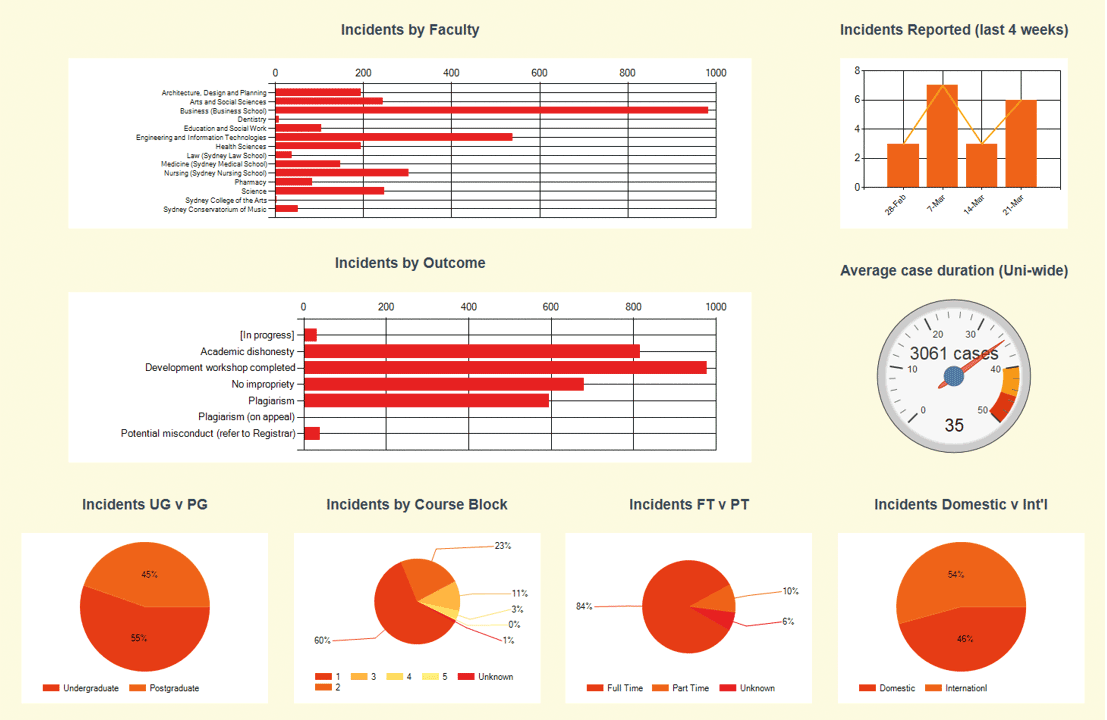A Masterclass in Transformation at the University of Sydney

In the enterprise, no buzzword is as buzzy as the term "digital transformation". If you spend any amount of time reading whitepapers, analyst research, or attending webinars you'll see the term digital transformation used in conjunction with a wide range of enterprise-focused technologies ranging from data centres to application development, and enterprise architecture and AI and blockchain. But what does digital transformation even mean?
For the University of Sydney, digital transformation has been underway since well before the topic achieved buzzword status. With the Legal and Compliance division leading the way, the University has achieved a wide variety of process transformations by expanding the reach and utilisation of its record-keeping system, TRIM/Content Manager.
“Ten years ago, TRIM was a humble records system, but it is now functioning as an enterprise business system,” notes May Robertson, University of Sydney Records Manager.
Robertson leads a team of 11 FTE staff in Records Management Services, a division of the University’s legal and compliance portfolio. Australia’s first University when it was founded in 1852, the University of Sydney now has over 70,000 students enrolled each year and taught by more than 8000 staff.
The management of information and records is complicated by the need to incorporate many affiliated research centres, clinical units and operations.
In addition to building and implementing tailored record-keeping solutions and practice, Records Management Services is tasked with integrating with business systems as well as legacy system decommissioning and migration of records.
Micro Focus Content Manager 9.1 is underpinning a burgeoning deployment of automated information capture and digital workflows across the University campus.
TRIM, as it was known then, was initially adopted in the year 2000 for physical records management, while the journey towards electronic record-keeping commenced in 2006. By 2011 a tipping point was achieved with more than 70% of records captured electrically.
There are now close to 3,800 registered users across the University. More than 28 million electronic documents are registered in Content Manager (CM), with over 5 million of these captured in 2019. The portion of University records stored electronically has now reached over 95%.
Around 700 of the 3,800 CM users choose to use the native CM application. These are the power user contingent, while the University has developed its own web interface since 2005 for faculty staff to look up student files and records, or for ad hoc saving of a document. This interface is commonly known as Records Online.
A Windows interface developed by INFORMOTION for TRIM, dubbed “Records Explorer”, is used by staff that generate large amount of records, for instance Project Managers or Procurement Officers, and who like the ability to bulk save records to Content Manager.
Management of emails as business records has been recently enhanced with the deployment of InMailX, a compliance and productivity add-on for Microsoft Outlook and Office 365.
Digitisation solutions from Australia’s EzeScan have been deployed at the University since 2008 and are now being utilised for automatic capture of electronic records into Content Manager, creation of new files and to kick off workflow items.
Business Register
In addition to using Content Manager to create and manage files and documents, it is also increasingly being used as a business register.
The first of its kind was the University Policy Register, established in 2013; followed by the University Property Register and Leasing Register. These registers use an extensive number of user-defined fields to describe each record, fully describing the University's corporate information and entities. In the case of the University's Policy Register, a set of user-defined fields are used to trigger the publication of policy documents to the University Web site or unpublish them from the Web.
“We also have taken full advantage of the workflow module for Content Manager. Bundling it with the Web form using the SDK and creating a Dashboard, we have not only successfully transformed business processes but also empowered the business with trends and insights,” said Robertson.
Another important part of the workflow journey has been achieved through deployment of INFORMOTION’s Fusion integration engine for Content Manager. INFORMOTION is an Australian solutions provider.
“Fusion encapsulates Content Manager’s API coding which then allows business systems to interface with Content Manager without the need to understand its code base or communication rules,” said Robertson.
“It eliminates the need to manage custom code every time a business application or Content Manager itself is upgraded as well as providing one place for rules for access control, retention and naming conventions. Fusion underpins the automation of record capture and management.”
CM Workflows
Underpinned by INFORMOTION’s Fusion, there are now many Content Manager-based workflows supporting the University.
These have been deployed to ensure rigorous record-keeping is integrated into a wide range of critical staff and student processes including:
- Examination incidents reporting and handling
- Student complaints
- A series of staff and HR case management related systems
- Sexual assault and sexual harassment reporting
- Declaration of external interest, outside earning and gifts
- Student academic appeals (both Faculty and Student Appeals Body levels)
- Executive Briefing Note submission and approval system
These processes are all now kicked off by Web forms that are able to consume staff and student information from University enterprise systems. Processing and handing are accomplished via Content Manager’s inbuilt workflow module.
The workflows allow all information and documents to be captured as the workflow unfolds. It routes tasks and sends out the communication automatically.
“Work process analysis then gives us the insight to strategically collect necessary information from user input. The Web form does a look up and consumes further related data from the University enterprise service bus,” said Robertson.
“For example, when a student logs into an academic appeals form, we already know their name and which faculty they are enrolled in and if they are a female or male or domestic or international student.
“The Web form (via Fusion) then talks to Content Manager via the SDK, and then goes off to create documents, create folders, verify, update or create TRIM locations, name the folder and documents, set access controls, set retention schedule, attach documents, and kick off a workflow item. It also assigns tasks, and in some cases performs checks in Content Manager to conduct a prior case search, produce a report and save it back to the relevant case file.
“Fusion does all this in the background with Content Manager just like a robot without you having to lift a finger,” said Robertson.
Digital Transformation
From a humble beginning in 2010, Records Management Services has supported the transformation of more than 20 business processes at the University of Sydney, helping staff and students do their business in an automated and digital way, and at the same time taking care of record-keeping obligations
In 2019, the Records Management Services team received a Vice-Chancellor’s Award for Excellence. Between April and November 2018, they initiated, planned and managed the development and on time delivery of five different workflow systems that transformed business processes across five areas of the University, and three of the systems have had enterprise-wide implementation
“Record-keeping is rarely seen as the glamourous part of any organisation but twice in the past four years the records unit has received Vice-Chancellor’s Awards for Excellence. This is formal recognition that our efforts are having a positive and widespread effect on business processes and culture throughout the University,” said Robertson.
The transformation journey at Sydney University could be described by three words: incremental, persistent and ongoing.
“There was no big bang approach. We just kept working at it, chipping away, and refining and improving as we go. It took 5-6 years before we reached a tipping point,” said Robertson.
“There have been several attempts over the years to get rid of TRIM. The feeling of being on the edge helped us to grow from strength to strength, to the point that now we are in a position of using a record-keeping system to provide enterprise system capabilities.”
 An example of a dashboard for the Educational Integrity workflow system, providing insights the University has never had before.
An example of a dashboard for the Educational Integrity workflow system, providing insights the University has never had before.
